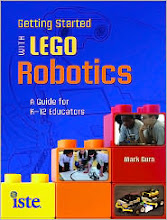"5 reasons your child should join a robotics team
"Robotics competitions are a great way to not only keep kids engaged after classes end, but to provide invaluable learning above and beyond what they can get in a typical classroom setting,” says Don Bossi, president of FIRST, a STEM (science, engineering, technology and math) advocacy nonprofit. “One of the biggest benefits is that kids get set up to find professional success, but they have a lot of fun while doing it.”
FIRST is a sport for the mind where every kid can go pro, and its students are even recognized with varsity letters in many states. Millions of students have participated in FIRST’s hands-on programs for kids ages 6-18, and alumni report improved problem-solving, time management, conflict resolution and communication skills. There are many more reasons to consider robotics programs for your child, and here are the top five.
1. They’ll learn to be creative and solve problems
Students must navigate restraints, including limited time and resources to meet deadlines and challenge requirements, but they won’t let that stop them. You’ll be amazed to see how each team comes prepared with a different solution to the same problem — including the innovative ways teams design and build their robots.
2. They’ll master teamwork and collaboration
Just like any other team sport, camaraderie is developed in robotics, too. Students work together to solve problems and meet goals. Plus, there’s a role for everyone: team responsibilities range from engineering and coding to fundraising and marketing. By working with others and integrating ideas born from teammates’ diverse backgrounds and schools of thought, students learn the true meaning of collaboration.
3. They’ll find meaningful role models
4. They’ll make friends for life
5. They’ll lay the groundwork for their future career
Robotics provides kids with the technical and interpersonal skills they’ll need to influence the future economy and become well-rounded adults, and it’s never too early to get involved. With high-quality education, mentorship and opportunities, any kid can find a future in STEM."


